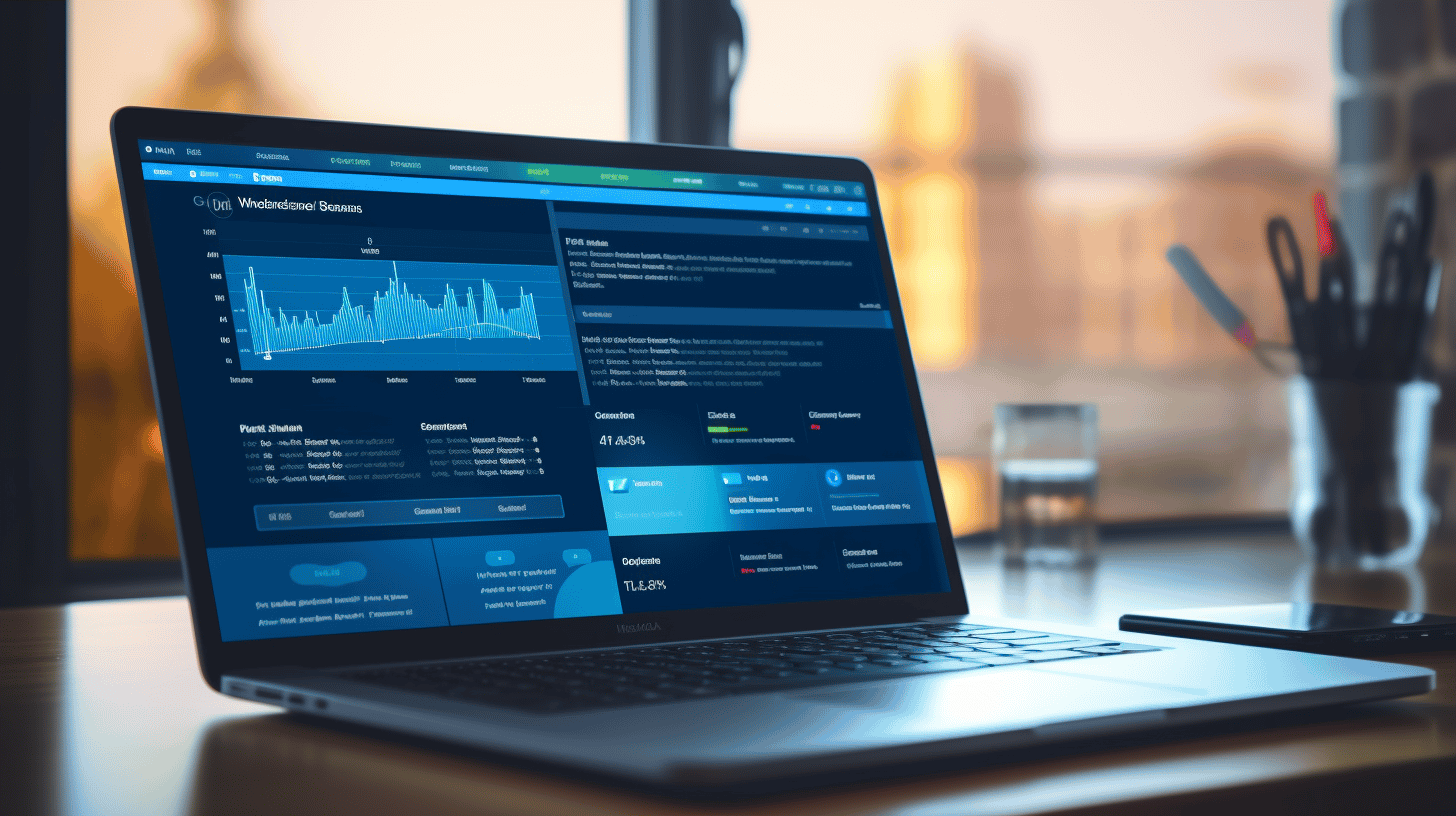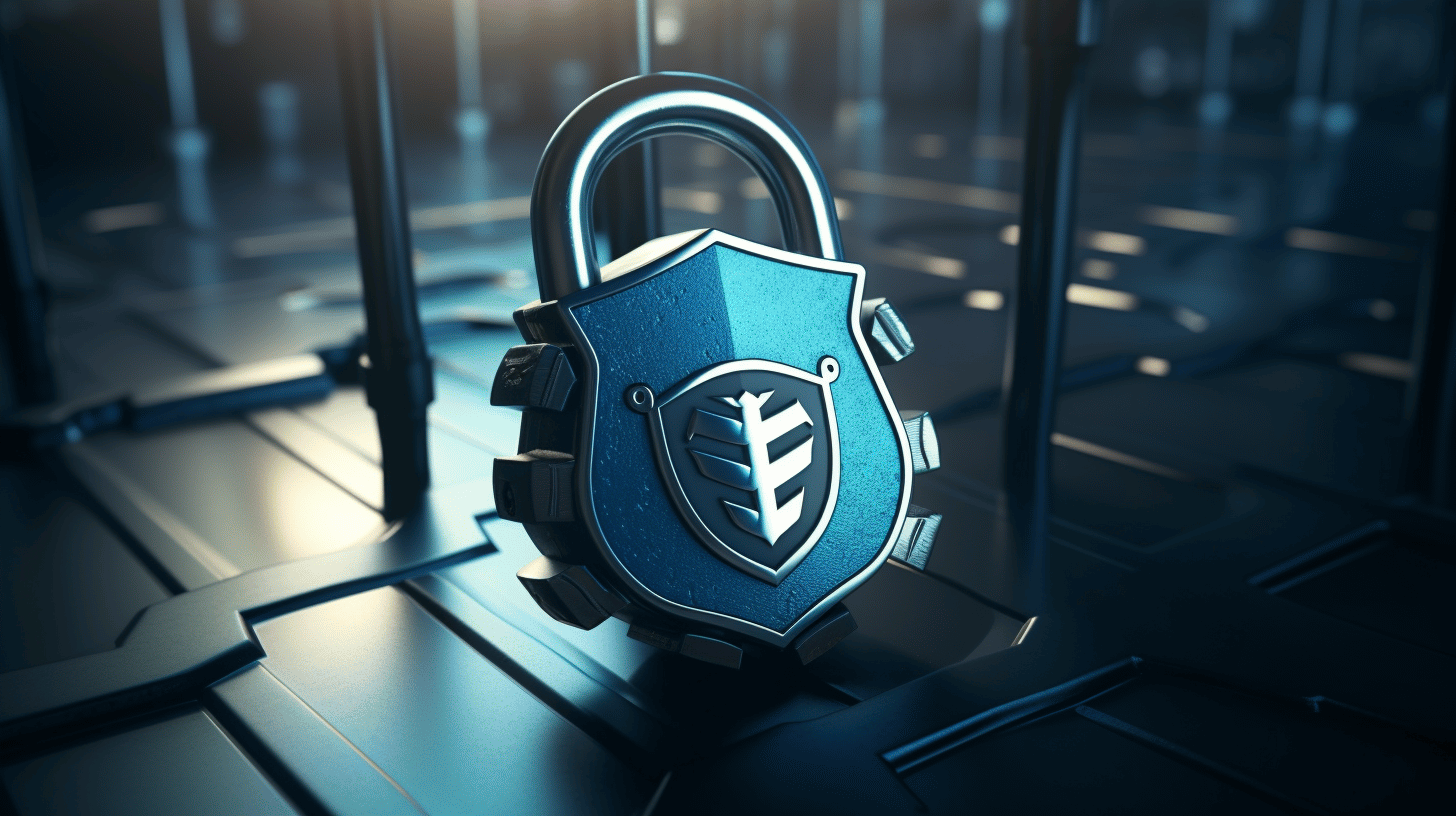In today’s digital landscape, small businesses rely heavily on their online presence to connect with customers, promote their products or services, and drive sales. One of the most popular platforms for building and managing websites is WordPress. With its user-friendly interface and a vast array of customizable themes and plugins, WordPress offers an excellent solution for businesses looking to establish a professional online presence.
However, with great power comes great responsibility. The increasing prevalence of cyber threats and attacks makes website security a top priority for small businesses. Protecting your WordPress website from potential vulnerabilities and security breaches is essential to safeguard your business’s reputation, customer trust, and sensitive data.
In this article, we will explore the importance of WordPress security for small businesses. We will delve into potential vulnerabilities that can leave your website exposed to attack and provide eye-opening statistics to emphasize the need for robust security measures. By understanding the risks and consequences, you will be better equipped to take proactive steps to secure your WordPress website effectively.
So, strap in, because we’re about to embark on a journey that will empower you with essential knowledge and practical tips to fortify your online presence and protect your small business from potential security threats. Let’s dive in! 🚀
Importance of WordPress Security
Introduction
WordPress is a popular content management system (CMS) that powers millions of websites worldwide. While it offers great flexibility and user-friendly features, it is important to address the issue of security when using WordPress. Neglecting security measures can leave your website vulnerable to potential threats and attacks, compromising your data and the experience of your visitors. In this article, we will delve into the importance of WordPress security and provide insights on how to protect your website.
Potential Vulnerabilities
With its popularity, WordPress becomes a prime target for hackers and cybercriminals. There is a misconception that WordPress is inherently insecure, but this is not entirely accurate. The vulnerabilities often arise due to the following factors:
- Outdated software: Failing to update your WordPress core, themes, and plugins can leave your website exposed to security loopholes that have been patched in later versions. Regular updates are critical to ensuring the security of your website.
- Weak credentials: Using weak passwords or default usernames like “admin” makes it easier for hackers to gain unauthorized access to your website. Strong and unique credentials are essential to protecting your WordPress login.
- Insecure themes and plugins: Not all themes and plugins available for WordPress are created equal. Some may have vulnerabilities that can be exploited by hackers. It is crucial to use reputable themes and plugins from trusted sources.
Security Breaches Statistics
To understand the significance of WordPress security, it is essential to look at the security breach statistics that highlight the risks involved:
- According to a report by Sucuri, out of the hacked websites analyzed, 94% of them were using outdated versions of WordPress.
- A study by Wordfence revealed that brute force attacks, where hackers attempt to guess your login credentials, are one of the most common attack methods against WordPress sites.
- Research conducted by Imperva shows that distributed denial of service (DDoS) attacks, which overload a website with traffic, have increased by 68% in recent years.
These statistics demonstrate that neglecting security measures can have serious consequences for your WordPress site. As a website owner, it is important to take appropriate steps to reinforce your website’s security.
In order to debunk common myths surrounding WordPress security, check out this article on protecting your website.
Remember, a secure website is not only about protecting your data, but also about maintaining the trust of your visitors and safeguarding your online reputation. Don’t compromise on security, make it a priority for your WordPress website!
WordPress Security Measures for Small Businesses
🔒 Is your small business using WordPress to power its website? Ensuring the security of your WordPress site is crucial in protecting your online presence and safeguarding sensitive customer information. In this article, we will explore some essential security measures that small businesses can implement to keep their WordPress sites secure.
Frequent Updates of WordPress Version
One of the simplest yet most effective ways to enhance the security of your WordPress site is to regularly update your WordPress version. Updates often include security patches and bug fixes, addressing vulnerabilities that could be exploited by hackers. By staying up-to-date with the latest WordPress version, you can ensure that your site has the necessary security enhancements.
To update your WordPress version, follow these steps:
- Log in to your WordPress dashboard.
- Go to the “Dashboard” menu and click on “Updates”.
- Click on the “Update Now” button to update your WordPress version.
Remember to always backup your site before performing any updates to avoid any potential issues.
Invest in a Reliable Security Plugin
Another effective strategy to enhance WordPress security is to invest in a reliable security plugin. Security plugins provide an additional layer of protection by actively monitoring your site for suspicious activities and blocking potential threats. They can help prevent brute force attacks, malware injections, and unauthorized access attempts.
Here are some popular security plugins that you may consider:
- Sucuri Security – Offers a suite of security features including malware scanning, security activity auditing, and website firewall.
- Wordfence – Provides real-time threat defense and firewall protection, as well as malware scanning and login security features.
- iThemes Security – Offers a range of security features such as malware scanning, brute force attack protection, and file change detection.
Make sure to research and select a security plugin that meets the specific needs of your business.
Robust Password Policies
One common security vulnerability is weak and easily guessable passwords. Implementing a robust password policy is essential to protect your WordPress site from unauthorized access. Encourage your employees and users to create strong passwords by following these best practices:
- Use a combination of uppercase and lowercase letters, numbers, and special characters.
- Avoid using common words or easily guessable information such as birth dates or pet names.
- Regularly change passwords and avoid reusing them across different platforms or accounts.
Educating your team about the importance of strong passwords can go a long way in preventing unauthorized access to your WordPress site.
Limitation of User Access
Limiting user access to your WordPress site can minimize the risk of unauthorized changes and potential security breaches. Only provide administrative privileges to trusted employees or users who require them for their job responsibilities. Other users should be assigned lower-level roles with limited access.
To manage user access, follow these steps:
- Log in to your WordPress dashboard.
- Go to the “Users” menu and click on “Add New” to create a new user.
- Assign the appropriate user role to restrict their access levels.
Regularly review and update user access privileges to ensure that only authorized individuals have the necessary permissions.
Backups and Recovery Plan
Despite all the security measures in place, it’s important to have a backup and recovery plan in case of any unforeseen events or security breaches. Regularly backing up your WordPress site ensures that you have a recent copy of your website’s data, which can be essential in restoring your site in case of any data loss or security issues.
Consider implementing the following practices for backups:
- Schedule regular automated backups of your WordPress site.
- Store backups in a secure location, either locally or on a cloud-based storage solution.
- Test your backup files periodically to ensure they are viable for restoration.
By regularly backing up your site, you can minimize the impact of any potential security incidents and quickly recover your site’s functionality.
Remember, protecting your WordPress site is an ongoing process that requires vigilance and regular maintenance. By implementing these security measures, you can significantly reduce the risk of security breaches and keep your small business website safe and secure.
🌐 Safeguard Your WordPress Site
Understanding WordPress User Roles and Permissions
WordPress is a versatile and user-friendly platform that allows individuals and businesses to create and manage their websites effortlessly. One of the key features of WordPress is its user role management system, which enables website owners to assign specific roles and permissions to different users. This helps in streamlining workflow, maintaining security, and ensuring smooth collaboration within a team.
Let’s take a closer look at the various user roles in WordPress and the permissions associated with each role:
Administrative Role 👑
The administrator is the most powerful role in WordPress, with complete control over every aspect of a website. Individuals assigned this role have the ability to add, delete, and modify content, manage plugins and themes, create new users, assign roles to users, and even change site settings. Administrators are essentially the “gatekeepers” of a website, responsible for its overall management and security.
Editor Role 📝
The editor role is ideal for those who need to have control over the content creation and editing process. Editors have the ability to publish, modify, and delete posts and pages, manage categories and tags, moderate comments, and upload media files. However, they do not have access to the more administrative functions like managing plugins or changing site settings.
Author Role ✍️
The author role is perfect for individuals who primarily focus on creating and publishing their own content. Authors can create and edit their own posts, but they do not have permission to publish or modify posts created by others. They can also upload media files to accompany their content. This role is suitable for freelance writers or bloggers who contribute to the website.
Contributor Role 🗒️
The contributor role is for users who contribute content to the website but do not have the ability to publish it themselves. Contributors can write and edit their own posts, which are then submitted for review by higher-level users (such as editors or administrators) for publishing. Contributors cannot upload media files and can only work within their assigned posts.
Subscriber Role 👤
The subscriber role is the most limited role in WordPress. Subscribers have the ability to manage their user profiles, edit their own details, and leave comments on published posts. Subscribers cannot create or modify any content on the website, making this role suitable for users who want to stay updated with the latest content or receive newsletters.
Table summarizing roles and capabilities:
| User Role | Capabilities |
|---|---|
| Administrator | All capabilities, including managing plugins and themes, creating users, and changing site settings |
| Editor | Publish, modify, and delete posts/pages, manage categories and tags, moderate comments, upload media |
| Author | Create and edit own posts, upload media files |
| Contributor | Write and edit own posts, submit for review by higher-level users |
| Subscriber | Manage user profile, leave comments on published posts |
Understanding the different roles and permissions in WordPress is crucial for effective website management and collaboration. By assigning appropriate roles to users, website owners can ensure that each individual has the right level of access and control. This not only helps in maintaining the security of the website but also facilitates a smooth workflow and content publication process. So, take advantage of WordPress user roles to optimize your website management experience!
Best Practices for WordPress Security
🔒 Introduction
Ensuring the security of your WordPress website is of utmost importance. With the increasing number of cyber threats and vulnerabilities, it’s crucial to implement best practices to protect your site and the sensitive information it holds. In this article, we will explore some key practices that will help you enhance the security of your WordPress site.
Keeping Theme and Plugins Up-to-date
One of the essential practices for WordPress security is regularly updating your themes and plugins. Updates often contain bug fixes, security patches, and feature enhancements. By keeping them up-to-date, you can:
- Stay Protected: Updates often address any security vulnerabilities present in older versions, reducing the risk of your site being compromised.
- Improve Performance: Updates can enhance the functionality and performance of your website, leading to a better user experience.
- Avoid Compatibility Issues: Updates ensure that your themes and plugins are compatible with the latest version of WordPress, reducing the chances of any conflicts or errors.
💡 Pro Tip: To streamline the update process, enable automatic updates for your themes and plugins. This way, you can ensure that you’re always running the latest, most secure versions.
Configuring Hosting Environment
The hosting environment of your WordPress site plays a crucial role in its security. Follow these best practices to set up a secure hosting environment:
- Choose Reliable Hosting Provider: Opt for a reputable hosting provider that prioritizes security and offers features such as firewalls, malware scanning, regular backups, and DDoS protection.
- Use Strong Passwords: Ensure that your hosting account and database passwords are strong and unique. Avoid using common passwords or those easily guessable.
- Limit Access: Set up proper file permissions and restrict access to sensitive files and directories. Regularly review and remove unnecessary user accounts and access privileges.
✅ Quote:
“Securing your hosting environment is a fundamental step toward protecting your WordPress site from potential security breaches.” – Best Practices for Website Security
Use of SSL/HTTPS
Securing the communication between your site and its visitors is vital. Implementing SSL (Secure Sockets Layer) and enabling HTTPS (Hypertext Transfer Protocol Secure) offers several benefits:
- Data Encryption: SSL encrypts the data transmitted between your site and visitors’ browsers, ensuring that sensitive information remains secure.
- Trust and Credibility: Displaying the padlock icon and “https://” in the URL assures users that they are accessing a secure site, enhancing trust and credibility.
- SEO Advantage: Google considers SSL and HTTPS as ranking factors, potentially boosting your site’s visibility in search results.
🔑 Pro Tip: Install a trusted SSL certificate and configure your WordPress site to always use HTTPS. Additionally, you can use plugins like Really Simple SSL to simplify the process.
Implementing these best practices for WordPress security will help safeguard your site against potential threats and maintain the trust of your visitors. Remember, staying proactive when it comes to security is key to keeping your WordPress site safe and secure.
Conclusion
In conclusion, prioritizing WordPress security is crucial for small businesses to protect their websites from potential vulnerabilities and security breaches. By implementing the necessary security measures such as keeping WordPress versions updated, investing in a reliable security plugin, enforcing robust password policies, limiting user access, and having a solid backup and recovery plan, businesses can significantly reduce the risk of cyberattacks.
Furthermore, understanding WordPress user roles and permissions allows businesses to allocate appropriate levels of access and control to different users, further enhancing security. Additionally, following best practices like keeping themes and plugins up to date, configuring the hosting environment securely, and implementing SSL/HTTPS encryption adds an extra layer of protection.
By taking these essential steps, small businesses can safeguard their WordPress websites and ensure a safe and secure online presence for their customers. Remember, maintaining website security is an ongoing process, and staying vigilant is key to mitigating potential risks.
If you’re looking for a reliable and comprehensive WordPress hosting platform that simplifies infrastructure, offers expert support, and proactive monitoring, consider Managed-WP™. With their managed WordPress cloud hosting services, you can rest easy knowing that your website’s security is in capable hands. Learn more about Managed-WP™ and their services here.
Frequently Asked Questions
- What are some essential WordPress security tips for small businesses?
Some essential WordPress security tips for small businesses include: regularly updating WordPress, themes, and plugins, using strong and unique passwords, enabling two-factor authentication, limiting login attempts, installing a reliable security plugin, backing up your website regularly, and keeping a close eye on file permissions and user roles.
- Why is website security important for small businesses?
Website security is crucial for small businesses as they often become targets for hackers and cybercriminals. A secure website safeguards customer data, protects business reputation, prevents downtime and data loss, and ensures a smooth and reliable online presence.
- What can happen if my WordPress website gets hacked?
If your WordPress website gets hacked, it can lead to various consequences such as theft of sensitive customer information, defacement of your website, blacklisting by search engines, loss of website traffic, damage to your business reputation, and potential legal and financial liabilities.
- How often should I update my WordPress website?
It is recommended to update your WordPress website, including themes and plugins, as soon as updates become available. Regular updates ensure you have the latest security patches, bug fixes, and compatibility improvements, reducing the risk of vulnerabilities.
- Do I need a security plugin for WordPress?
Yes, using a security plugin is highly recommended for WordPress websites. A security plugin provides additional layers of protection, such as firewall, malware scanning, login lockdown, IP blocking, and security notifications, helping to defend against common security threats.



















